It looks like you're using an Ad Blocker.
Please white-list or disable AboveTopSecret.com in your ad-blocking tool.
Thank you.
Some features of ATS will be disabled while you continue to use an ad-blocker.
share:
I have not done much research into these but thought I would post it here, ancient machines found in Russia.
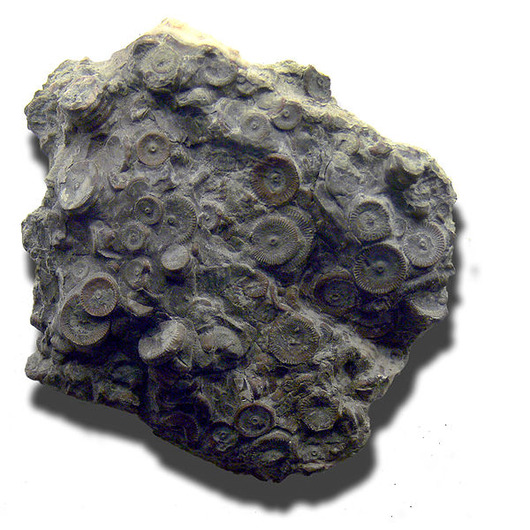
eng.spb-venchur.ru...
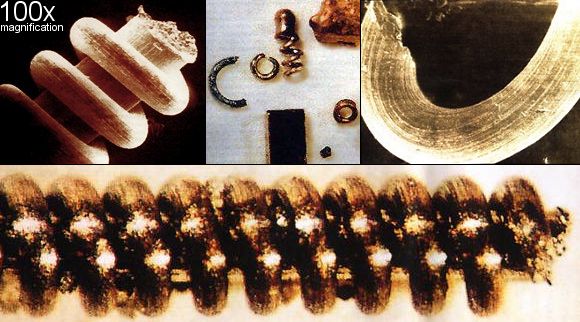
www.artgomperz.com...

In the remote Kamchatka peninsula, 150 miles from Tigil, Russia, University of St. Petersburg archaeologists discovered a strange fossil. The authenticity of the find has been certified. According archaeologist Yuri Golubev, the discovery surprised scientists. It was a machine. It is not the first time that an artifact, an ancient object, something like this is found in that region. But, surprisingly, the machine,at first glance, inlaid in rock looked like the remnant of a volcano. After analysis, it seems that it was made of metal parts that seem to form a mechanism, a gear which may be of a type of watch or computer. The pieces were all dated – 400 million years ago! Scientists said hikers found these remains in rock. The archaeologists went to the place and made the discovery. Hundreds of toothed cylinders made up the machine.They were in perfect state of conservation. Archaeologists had to control the area, because the people began to appear in large numbers to look at it. American geologists examined the machine and confirmed it was a machine. They wer amazed.
eng.spb-venchur.ru...

Unusual, mostly spiral-shaped objects found in years 1991-1993 on the small river Narada, on the eastern side of the Ural mountains (Russia). Their size ranges from a maximum of 3 cm (1.2 in.) down to an incredible 0.003 mm, about 1/10,000th of an inch! The larger ones are of copper, while the small and very small ones are of the rare metals tungsten and molybdenum. Exact measurements of these often microscopically-small objects have shown that the dimensions of the spirals are in the so-called Golden Mean ratio. All tests carried out to date give an age for the objects of between 20,000 and 318,000 years, depending on the depth and the situation of the site.
www.artgomperz.com...
There are tons of threads on these. Read this post see what the fossil is:
www.abovetopsecret.com...
www.abovetopsecret.com...
Those are Laudonomphalus regularis (Natural historical museum of Lille, north of France), Givetian, Denvonian.
Example of fossilized marine life: disjointed knuckles encrines... from the Crinoids species that are marine animals that make up the class Crinoidea of the echinoderms.
I imagine some people will claim that the first picture is nothing more than fossilised sea life.
reply to post by FatherLukeDuke
Hmmm, strange type of sea life, what about the other pic of nano metallic parts?
Hmmm, strange type of sea life, what about the other pic of nano metallic parts?
I wonder Why, any machine would need so many gears, unless it was to do exact measurements, or needed to be very fine tuned. Like a clock. Very
strange indeed. It blows my mind what we still have to discovry about our origins on this planet, and I feel it is nothing like what we have been told
our origins are.
The top pic kinda reminds me of the floating stuff on the nasa video feeds from the shuttle
I could buy into either fossilized creatures, like coral, or a machine of some sort.
Its no Antikythera mechanism but its pretty cool still!
I could buy into either fossilized creatures, like coral, or a machine of some sort.
Its no Antikythera mechanism but its pretty cool still!
Interesting....But let me play devil's advocate here for a minute. Couldn't anyone with the cajones enough to approach a volcano "dip" some
metalic gears and parts in lava, then cold spash it in water real fast in order to conserve the parts and solidify the rock...Could this be fabricated
in some way ? The rock would carbon test in a rage similar to what has been tested here, no ?
Originally posted by Nuke2013
Interesting....But let me play devil's advocate here for a minute. Couldn't anyone with the cajones enough to approach a volcano "dip" some metalic gears and parts in lava, then cold spash it in water real fast in order to conserve the parts and solidify the rock...Could this be fabricated in some way ? The rock would carbon test in a rage similar to what has been tested here, no ?
Quite possibly, but the result would not be fossilised, that takes time im afraid.
The interesting thing about those coils it that we use tungsten molybdenum alloys today for there high electrical resistance. These type coils are
used in heating applications and as electrical resistors.
reply to post by andy06shake
True but to me they don't look fosilised but more on the "burned" and encased side. Some "plishish" was obviously done but the gears look way too good in shape to be fosils to me. just my humble opinion....
True but to me they don't look fosilised but more on the "burned" and encased side. Some "plishish" was obviously done but the gears look way too good in shape to be fosils to me. just my humble opinion....
An intriguing post!The tungsten got my attention.I am reminded of stories of unusual finds from a series of Reader's Digest books.I'm proposing the
idea of starting a thread based on those,I would have to sit down and go through my hard copies-reword a few bits so as not to entirely plagarize and
give a summary.Anybody like the idea?I am incapable on my phone to do links but would love to start such a thread and others could throw up relevant
links or images?I love the concept behind your thread,OP.What was here before us? S and F.
Originally posted by LUXUS
reply to post by FatherLukeDuke
Hmmm, strange type of sea life, what about the other pic of nano metallic parts?
I remember reading about these years ago - one of the possible explanations I recall leaning towards was sea life/ seashells and the like...
But those nano-springs or augers are a pretty interesting find. Then again, they may be another weird case of OOPARTS (Out of Place Artifacts) like the ancient spark plug that was found in a rock back in the '60s.
Of course, I hope that they've been taking these artifacts seriously since the discovery - I mean, it's been over 20 years now since they discovered this stuff for ef's sake, and still no updates on these finds.
These spiral objects are made from rare materials, and it strikes me as odd that Mother Nature would create precious metals in a machined-like form. But then again, look at flowers, snowflakes and snail shells... Mother Nature gets those shapes right every single time she cooks 'em up now doesn't she?
Yeah it called sea shells
The next one has the support of Michael Cremo - and that pretty much falsifies it. There are microfossils but these aren't them. If you look at the story link to its fully of laughable falacies . Like metal parts 'fossilizing'
ah yeah
Simply another in a long line of fake reports, 'pious fraud' by believers. As noted above there really are microfossils, in this case they have taken some real ones and mixed them in (or just made up the story) a few modern high tech parts.
Luxus may I suggest you learn about 'Weekly World News' and what it is
The next one has the support of Michael Cremo - and that pretty much falsifies it. There are microfossils but these aren't them. If you look at the story link to its fully of laughable falacies . Like metal parts 'fossilizing'
The parts reached the fossilization state in a period of time historically and geologically short. Possibly, the “machine” fell into a swamp
ah yeah
Simply another in a long line of fake reports, 'pious fraud' by believers. As noted above there really are microfossils, in this case they have taken some real ones and mixed them in (or just made up the story) a few modern high tech parts.
Luxus may I suggest you learn about 'Weekly World News' and what it is
edit on 17/5/13 by Hanslune because: (no reason given)
reply to post by the_philth The Spark Plug in a geode is a
great OOA.Thanks for putting that up there.These stories are exactly what I was talking about.
reply to post by LUXUS
People still believe these stupid tests? They are nowhere near accurate and they really have no clue to the age! People still fall for their trap to get attention.....Carbon dating is an absolute joke
All tests carried out to date give an age for the objects of between 20,000 and 318,000 years
People still believe these stupid tests? They are nowhere near accurate and they really have no clue to the age! People still fall for their trap to get attention.....Carbon dating is an absolute joke
Originally posted by Chrisfishenstein
People still believe these stupid tests? They are nowhere near accurate and they really have no clue to the age! People still fall for their trap to get attention.....Carbon dating is an absolute joke
C-14 dating is quite reliable unless you have an intense bias to disregard them to support a religious belief. There are a large number of other types of dating that can be used to correlated with them. However......
As for the above dates-you are correct since they are made up, yep they are an absolute joke
----------------------------------------------------
Adding material for the thread
Link to an image of crinoidea
edit on 17/5/13 by Hanslune because: (no reason given)
Originally posted by andy06shake
I imagine some people will claim that the first picture is nothing more than fossilised sea life.
I wonder why that is?
reply to post by the_philth
Have the academics debunked the spark plug in the geode yet?
Few interesting pics
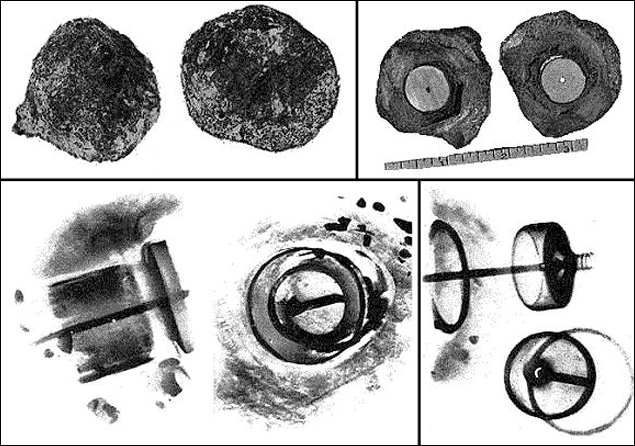
Ancient Spark plug?
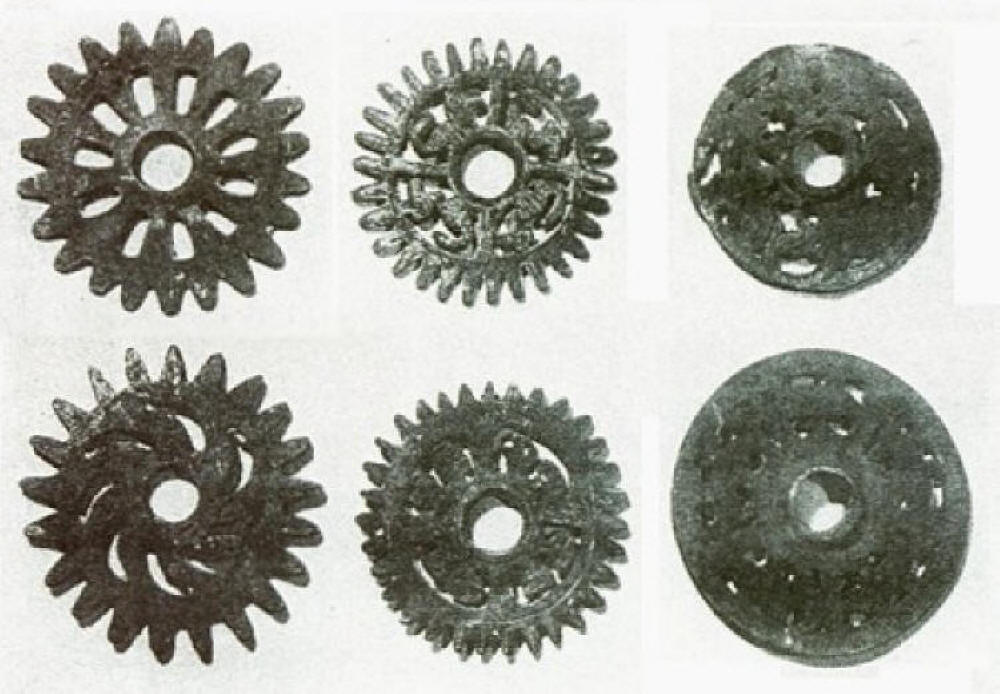
Ancient bronze wheels, described by professor Rafael ?
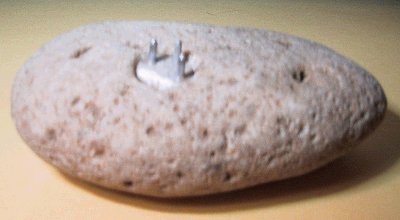
Ancient electrical device in rock, think this one is fake myself but what do you think?
Have the academics debunked the spark plug in the geode yet?
Few interesting pics

Ancient Spark plug?

Ancient bronze wheels, described by professor Rafael ?

Ancient electrical device in rock, think this one is fake myself but what do you think?
new topics
-
Paradox of Progress
Ancient & Lost Civilizations: 2 hours ago -
Joe Biden gives the USA's Highest Civilian Honor Award to Hillary Clinton and George Soros.
US Political Madness: 4 hours ago -
Winter Storm
Fragile Earth: 5 hours ago -
Biden Face Planted Somewhere
Politicians & People: 7 hours ago -
A great artist and storyteller, for kids of all ages
General Entertainment: 7 hours ago -
What Is 'Quad Demic'? Mask Mandate Returns In These US States
Diseases and Pandemics: 11 hours ago
top topics
-
Joe Biden gives the USA's Highest Civilian Honor Award to Hillary Clinton and George Soros.
US Political Madness: 4 hours ago, 13 flags -
What Is 'Quad Demic'? Mask Mandate Returns In These US States
Diseases and Pandemics: 11 hours ago, 10 flags -
Volcano Watch 2025
Fragile Earth: 13 hours ago, 8 flags -
The Future of fashion .
Social Issues and Civil Unrest: 12 hours ago, 8 flags -
Winter Storm
Fragile Earth: 5 hours ago, 7 flags -
Bin Cyber Junk…
Short Stories: 12 hours ago, 6 flags -
Biden Face Planted Somewhere
Politicians & People: 7 hours ago, 5 flags -
A great artist and storyteller, for kids of all ages
General Entertainment: 7 hours ago, 4 flags -
Paradox of Progress
Ancient & Lost Civilizations: 2 hours ago, 4 flags -
The Undertones - Teenage Kicks
Music: 13 hours ago, 3 flags
active topics
-
-@TH3WH17ERABB17- -Q- ---TIME TO SHOW THE WORLD--- -Part- --44--
Dissecting Disinformation • 3931 • : RelSciHistItSufi -
Joe Biden gives the USA's Highest Civilian Honor Award to Hillary Clinton and George Soros.
US Political Madness • 29 • : caterpillage -
What Is 'Quad Demic'? Mask Mandate Returns In These US States
Diseases and Pandemics • 27 • : Kaiju666 -
Winter Storm
Fragile Earth • 17 • : WeMustCare -
NJ Drones tied to Tesla explosion at Trump Las vegas
General Conspiracies • 45 • : glen200376 -
Paradox of Progress
Ancient & Lost Civilizations • 2 • : ChaoticOrder -
New Jersey-Teachers Can Now Be Certified Without Passing Basic Reading Writing Math Testing
Education and Media • 14 • : boatguy12 -
Judge rules president-elect Donald Trump must be sentenced in 'hush money' trial
US Political Madness • 18 • : marg6043 -
Volcano Watch 2025
Fragile Earth • 6 • : rickymouse -
The Future of fashion .
Social Issues and Civil Unrest • 18 • : KrustyKrab
